The Toyota Mirai is the brand’s first attempt at making hydrogen-powered mobility a mass-market proposition. And based on our first quick drive of the fuel-cell vehicle in Japan, it’s a promising start.
The Toyota Mirai is an electric car that uses a hydrogen fuel cell onboard to create energy on the run. You can fill it with five kilograms of hydrogen in about 3-5 minutes, and that should get you as much as 650 kilometres of driving range.
Sounds enticing, right? It is. Provided you can find somewhere that hydrogen is readily available to fill up. That’s the biggest boundary to fuel-cell vehicles (FCVs, in industry speak), and without significant investment in infrastructure these vehicles can’t be considered viable for the majority of people.
But what if you’re one of the lucky ones? What if you like in Japan, Korea, Germany or parts of the US where hydrogen is readily available, and a tank of juice costs about as much as it does for petrol or diesel? Does the Mirai, er, stack up?
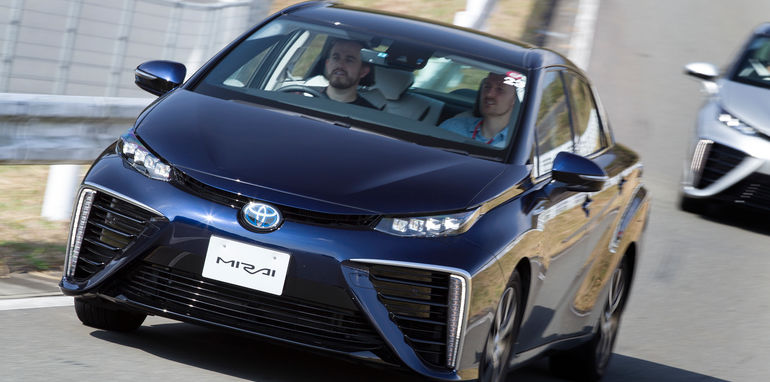
Yes, it does, provided you can afford the car. Based on the Japanese starting price of ¥6.7 million â€" about $78,000 if it were to be sold in Australia â€" it ain’t cheap. But new technology always comes at a price, and this generation of the Mirai is unlikely to be sold here, anyway.
Speaking of the tech, let’s get the details out of the way.
The fuel-cell stack is placed under the front seats, while the electric motor and power control unit sit under the bonnet atop extra bracing between the front wheels, which Toyota claims gives the Mirai sporty driving characteristics. The two cylindrical fuel tanks sit beneath the rear seat and under the boot floor, and they have a combined capacity of 124 litres.
It is front-wheel drive, as you may have guessed, but because of the extra stiff underbody structure and bracing through the cabin, Toyota claims the Mirai handles like a midship-engined vehicle. Indeed, the majority of the weight in the car is located around the middle section of the vehicle, so is it fun to drive?
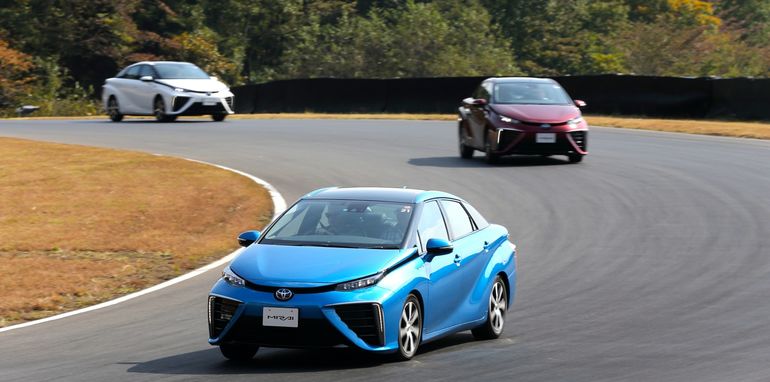
Well, let’s just say that based on our very limited drive time at the short course at Fuji Speedway in Japan that it’s no point-and-shoot weapon, and it won’t match hot hatches for enjoyment.
But Toyota chief Akio Toyoda’s push to make the brand’s cars enjoyable to drive hasn’t been without success. It’s not tedious, but hardly tenacious. Part of that comes down to the fact it weighs 1850 kilograms â€" more than a Toyota Aurion â€" despite being slightly smaller.
However, it does sit very flat through corners, and the steering offers decent cornering response without being sharp or rapid.
While a race track with some artificial bumpy surfaces is hardly a real world test drive, we found the suspension dealt with sharp edges quite well, though the bump control was better at higher speeds than below 20km/h.
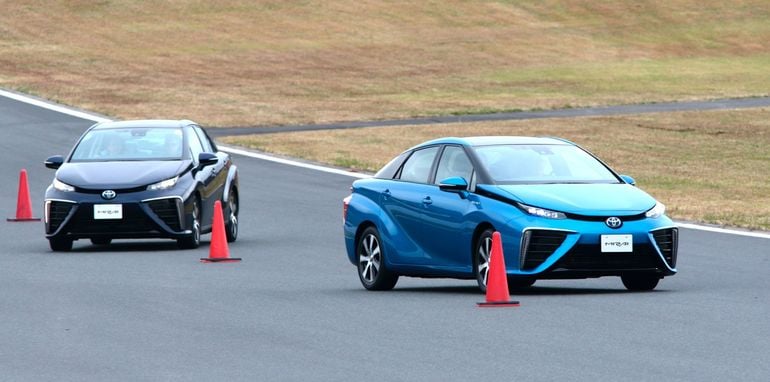
In terms of power, it isn’t quiet like most electric vehicles, in which you only hear the slight whine from the motor and the wind and road noise that you always get.
Instead, the hydrogen fuel cell drive system emits some sucking and whooshing noises. The suck sound is an air compressor that is designed to increase the amount of air flow to the fuel cell stack to help it break down the fuel, while the whooshing noise is the hydrogen recirculation pump.
It’s still quiet by conventional car standards, and over some rougher surfaces we noted the sound of the suspension could thump through the cabin somewhat, though that was exacerbated by the peaceful nature of the cabin.
And the acceleration on offer isn’t neck-snapping like some regular electric cars, though it is initially rapid from a standing start. Like an EV there are no gear changes, and like the Toyota and Lexus hybrids we’ve driven in the past, the brakes are a little wooden at the top of the pedal travel and then can be quite grabby upon harder application.
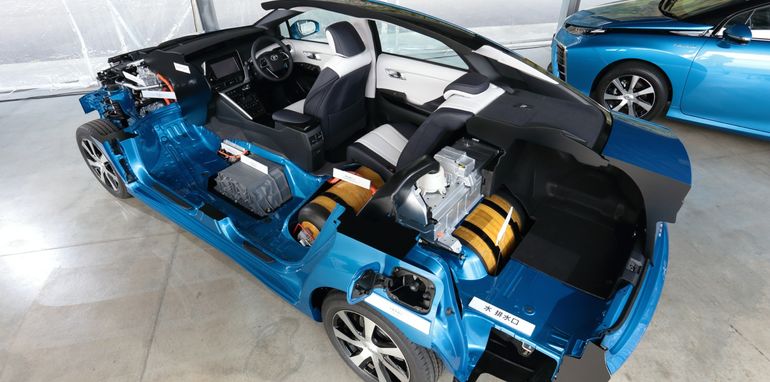
As for the cabin space, the Mirai is new-world Toyota.
Gone are the boring finishes and fixtures that we’ve become used to in the conventional cars offered by the brand in years gone by, and instead the cabin finishes are of a high perceived quality.
The dashboard and doors feature nice leather trim, while the upright media screen and touch-sensitive electrostatic temperature and heated seat/steering wheel controls are Lexus-like in their luxuriousness.
There are issues with the Mirai’s cabin, though. It is a four-seater, not a five like the Honda Clarity (it’s main competitor in this niche marketplace), and the space in the rear is a little bit tight considering the size of the car. The back seat, for instance, can’t match the cavernous cabin of the Camry for knee, head and toe room.
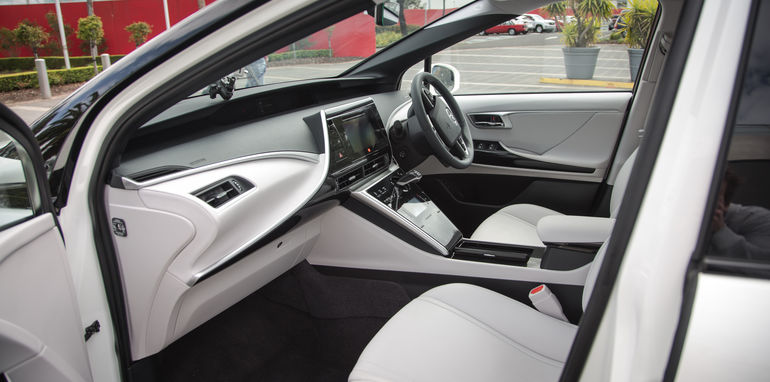
The boot â€" considering how much is smooshed in behind and beneath it â€" is usable at 360 litres, though that’s considerably smaller than it should be for a car of this size.
After a couple of hours and just a few kilometres in and around the Toyota Mirai, it’s safe to say this is going to be a niche car for a niche market. But if you happen to be part of that clique, it’s a car that you should take a look at.
Comments
Post a Comment